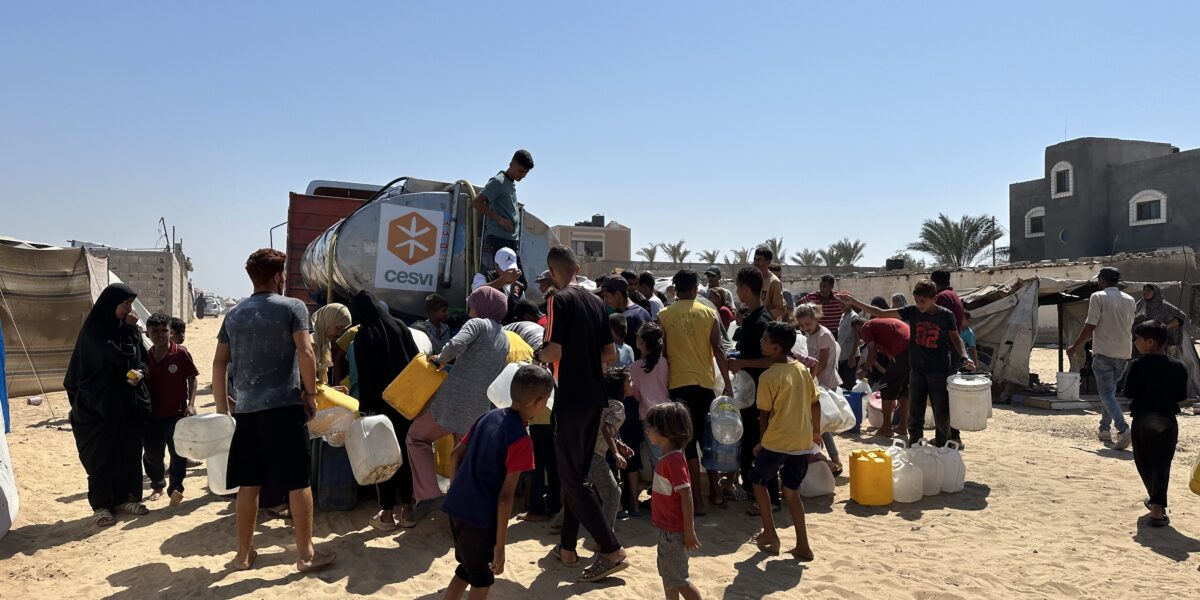Over 1.1 million people in Gaza have been forced to flee since the beginning of March. The population is now facing a desperate humanitarian situation.
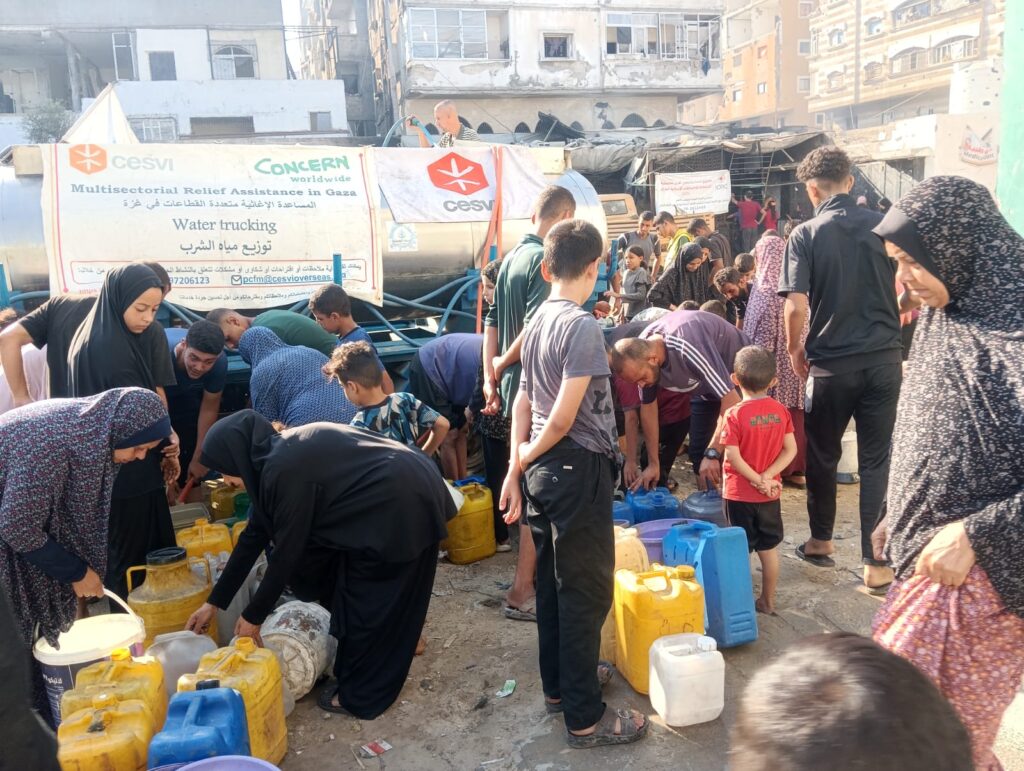
According to data from the Ministry of Health in Gaza, the death toll has now exceeded 65,000 deaths, with child mortality reaching unprecedented levels: since October 2023, one child has lost their life every 52 minutes.
In recent weeks, the flow of people fleeing southwards has increased significantly: between 17 and 20 September, the United Nations recorded more than 81,000 displacements.
With almost the entire population crowded into a tiny area of the Strip – 18%, compared to 82% of the territory under evacuation orders and/or constant bombardments (OCHA) – the risk of a health and food catastrophe is increasingly concrete.
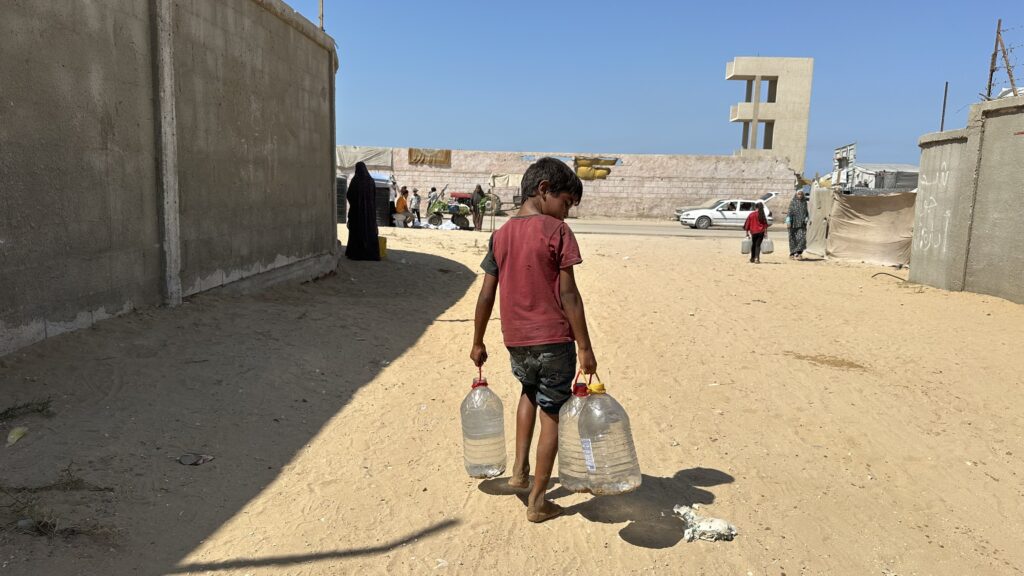
In this context of immense difficulties and dangers, CESVI – with the support of Alliance2015 partners Concern Worldwide and Welthungerhilfe – continues its commitment, focusing efforts on delivering essential and life-saving aid.
Hunger and thirst, the silent emergencies
Living conditions in Gaza are no longer sustainable. Clean water is lacking: WASH (Water, Sanitation and Hygiene) infrastructure is severely damaged and access to services is extremely limited, with 69% of facilities located in high-risk areas. It is now impossible to reach the minimum standard of 15 litres of water per person per day. Damage to the sewage network has caused wastewater to spill out, and together with waste accumulation, this has created a fertile environment for the spread of diseases.
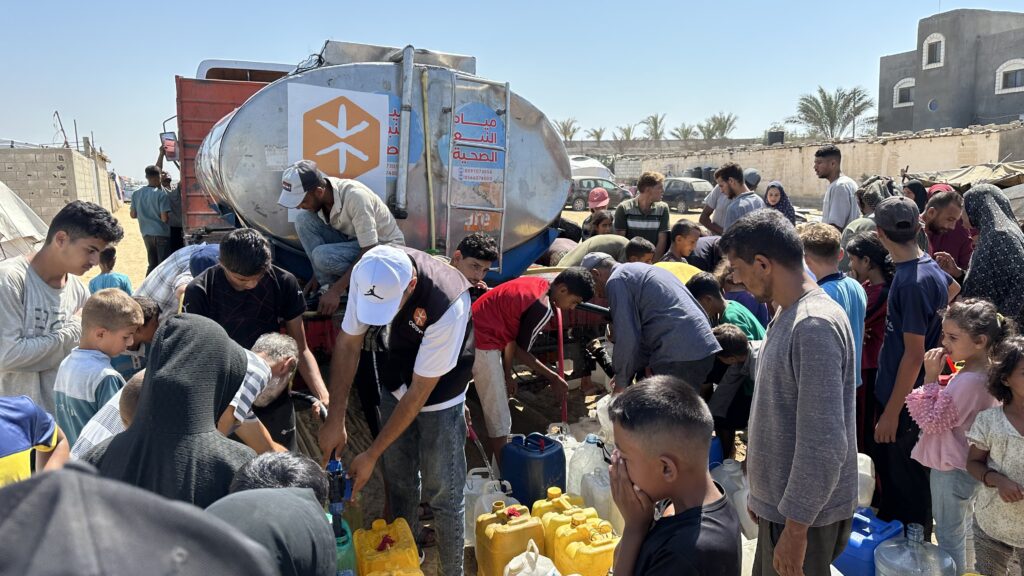
Even more alarming is the malnutrition emergency. Statistics show a sharp increase in hunger, especially among children. In July and August alone, more than 28,000 children under the age of 5 were diagnosed with acute malnutrition. Projections indicate that hundreds of thousands of people, including children, pregnant women, and newborns, will suffer from acute malnutrition in the coming months.
CESVI’s commitment despite the risks
In such a critical scenario, CESVI’s work represents vital hope. We continue the distribution of drinking water both in Gaza City and in the central area of the Strip, in Deir al Balah and Khan Younis. Despite operational risks, the distribution of 55,000 litres of water per day continues, reaching more than 4,600 people daily, with the aim of increasing activities in central areas should there be interruptions in Gaza City.
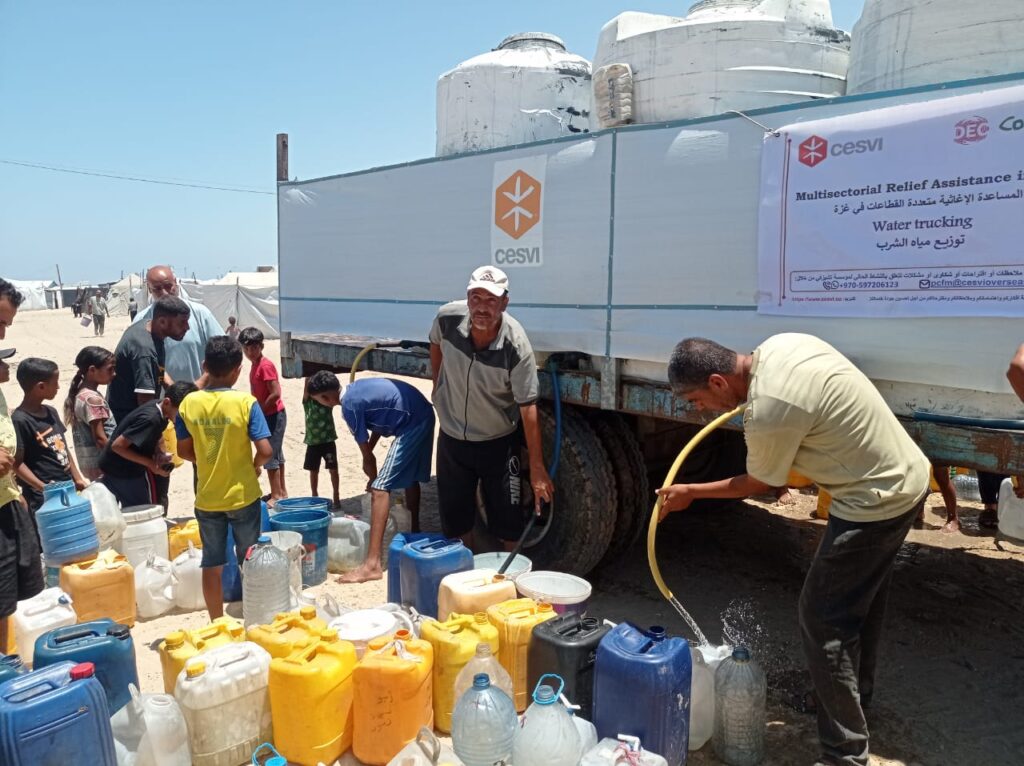
However, fieldwork is complex. For security reasons, many activities such as the installation of latrines and the rehabilitation of WASH infrastructure have been suspended in Gaza City, but continue in the displacement camps of Deir al Balah and Khan Younis.
We cannot leave Gaza alone, now more than ever.

